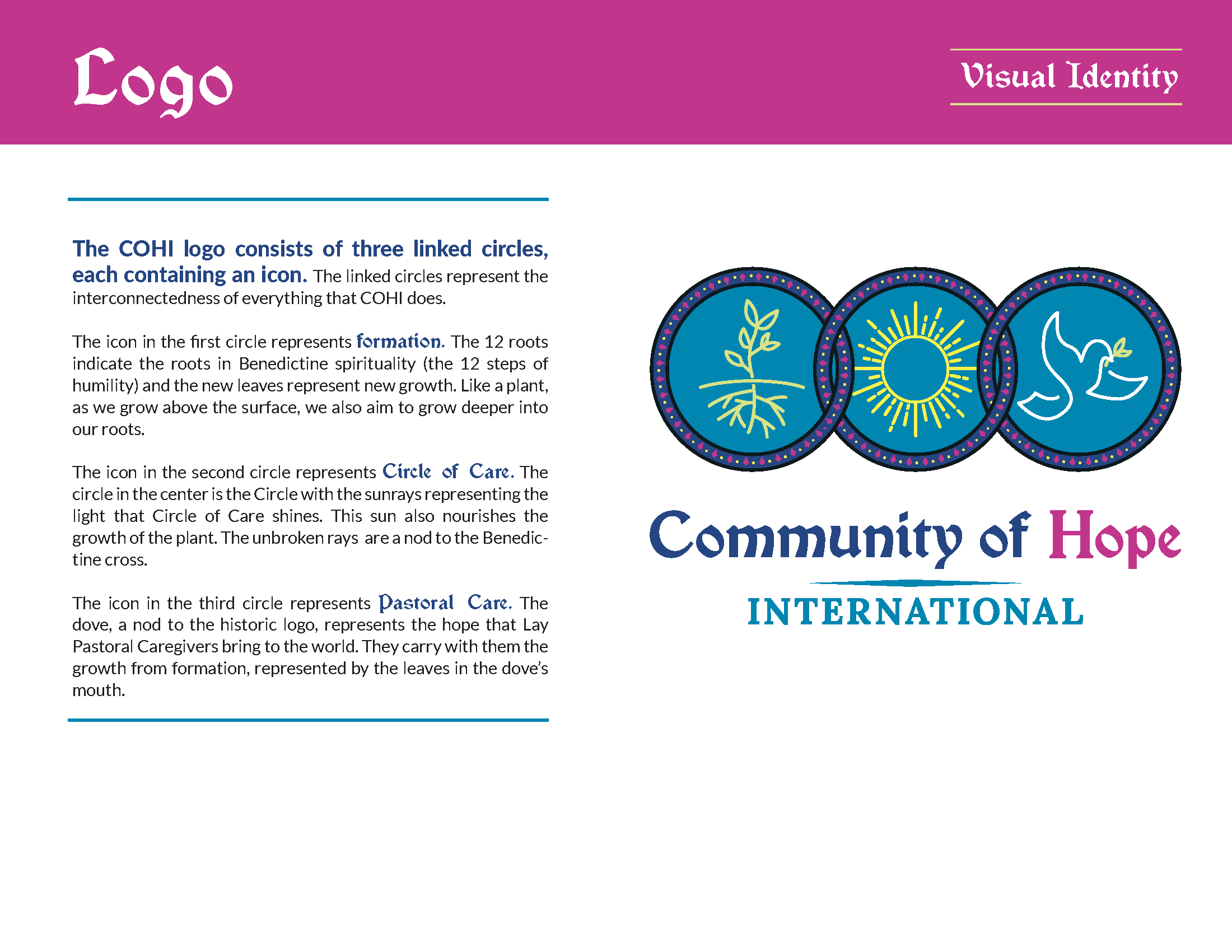History of Community of Hope International
In 1994, Rev. Helen Appelberg, Assistant Director of Pastoral Care at St. Luke’s Hospital in Houston, Texas, was appointed to create a training course for people to become lay chaplains. With support from staff chaplains and advice from Esther de Waal, an authority on Benedictine spirituality, a twelve-week curriculum was established. Rooted in the ageless principles of The Rule of Benedict and sustained by clinical pastoral practices, the Community of Hope was born.
Our Mission
Creating communities, steeped in Benedictine Spirituality, to serve others through compassionate listening.
What We've Achieved
As Community of Hope classes were being taught regularly at St. Luke’s, training centers were being started in churches, hospitals, hospices, and care centers across Texas and other states. The curriculum was expanded into a fourteen-week format as centers continued to grow across the United States, British Columbia, Canada, Mexico, and in Malawi, Africa.
Community of Hope became Community of Hope International in 2006 and started the work to become a non profit organization under the Internal Revenue Code 501(c)(3).
In 2022, after the profound effect of the Covid-19 pandemic and the passing of our founder, the Board of Directors recognized the changing needs of the church universal and decided it was time for organizational redevelopment to better position us to thrive and meet the moment.
The redevelopment work included restructuring the Board of Directors and governing documents, a thorough distillation of our identity and brand, and the decision to tackle a full revision of the curriculum that will be reordered to reflect our renewed vision.
Community of Hope International celebrated its 30th anniversary in 2024 and is excited to see what the next 30 years will bring!


